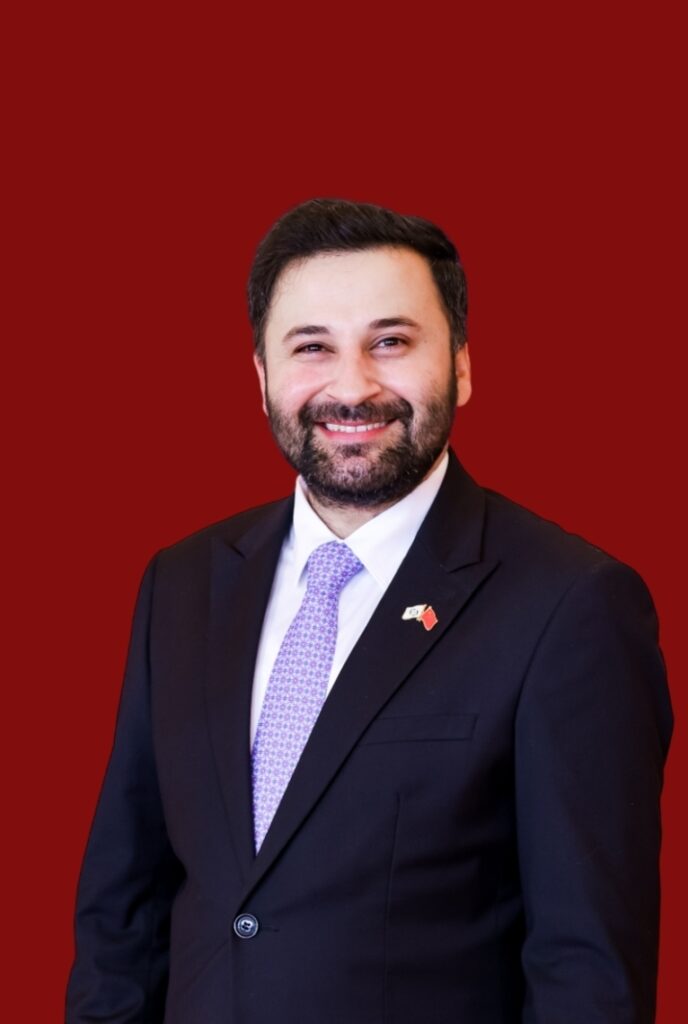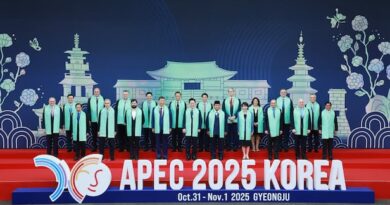By Qaiser Nawab, Chairman BRISD
The Fourth Plenary Session of the 20th Communist Party of China (CPC) Central Committee concluded in Beijing, adopting the guiding proposals for the 15th Five-Year Plan (2026–2030). The four-day meeting, widely seen as one of the most important political events of the year, marks a defining moment in China’s march toward its 2035 goal of “basically achieving socialist modernization.”
The session underscored continuity in China’s economic strategy strengthening industrial foundations, deepening technological innovation, and sustaining reform while expanding the country’s global engagement. It reaffirmed the achievements of the 14th Five-Year Plan (2021–2025), emphasizing that the coming phase will focus on quality growth, self-reliance in critical technologies, and a more confident and proactive approach to opening up.Strengthening Innovation, Industry, and Domestic DemandThe Fourth Plenum placed innovation and industrial modernization at the heart of the 15th Five-Year Plan. Policymakers highlighted the need to build a “modern industrial system” capable of ensuring both efficiency and security in supply chains. The plan envisions a three-tiered industrial strategy upgrading traditional sectors, nurturing emerging industries, and accelerating the development of future technologies. Traditional industries such as mining, chemicals, shipbuilding, and construction are to be strengthened for competitiveness, while new energy, aerospace, and advanced materials are expected to drive emerging growth.
In future industries, the focus shifts to cutting-edge technologies such as quantum computing, hydrogen and fusion energy, biomanufacturing, and sixth-generation mobile communications. To translate breakthroughs into real economic gains, the plan calls for pilot platforms to bridge research and commercialization and proposes stronger linkages between universities, research institutions, and industries.
The proposals also place talent development at the core of industrial transformation. Education, research, and innovation ecosystems are to be integrated to create world-class science and technology hubs. The “AI+” initiative will be implemented nationwide to infuse artificial intelligence into traditional industries, logistics, and services establishing a stronger link between digital transformation and productivity.
Alongside technological and industrial goals, the plenary stressed the importance of expanding domestic demand as a foundation for sustainable growth. Consumption is expected to replace investment as the main growth engine, with policies targeting income distribution, job stability, and social welfare. On the supply side, the plan focuses on improving institutions and infrastructure for consumption expanding healthcare, education, tourism, and transport facilities while easing market access in key sectors.
On the demand side, reforms such as wage adjustments, improved pensions, childcare subsidies, and flexible leave policies will encourage household spending. The document also calls for removing outdated restrictions on car and housing purchases and promoting leisure and cultural consumption. This shift reflects Beijing’s belief that the country’s vast domestic market described as “the most valuable resource” holds the key to economic stability in a complex global environment.
Confident Opening and Green Transition
A notable feature of the Fourth Plenary Session was the reaffirmation of “high-level opening-up,” now elevated to a more prominent policy position than in the previous plan. The tone is more confident and forward-looking: China intends to pursue “independent and proactive opening-up” to strengthen its role in global trade and investment, while ensuring its national interests and security remain safeguarded.
The plan highlights expanded market access in services, innovation in trade, and two-way investment under a more balanced and transparent framework. Belt and Road cooperation remains a central pillar, with renewed focus on green energy, digital connectivity, and high-quality infrastructure. The document also addresses the need to improve export control mechanisms and strengthen review systems for security-sensitive sectors a sign that Beijing seeks to balance openness with prudence.
Financial opening occupies a larger space in the 15th Five-Year Plan. With China accounting for nearly one-fifth of global GDP but the renminbi still representing less than three percent of global payments, policymakers see an opportunity to expand the currency’s international role. The plan’s language on RMB internationalization has shifted from “steady and prudent” to a more assertive “promote,” reflecting greater confidence in financial reforms. Hong Kong will continue to serve as a bridge for capital flow reforms through Stock Connect and Wealth Management Connect programs, while domestic institutions will be strengthened to attract foreign investment and expertise.
The green transition forms another strategic pillar of the new plan. The coming five years are defined as a decisive period for achieving China’s carbon peaking target before 2030. The plan outlines four key tasks: capping coal and oil use, adopting dual carbon control mechanisms, expanding the national carbon market to cover all major industries by 2027, and promoting green consumption through tax incentives and innovation.
These steps mark a decisive shift toward low-carbon growth. With renewable energy capacity already exceeding two billion kilowatts, the next phase will focus on industrial decarbonization, electric mobility, and circular economy practices. Policymakers view this transformation not only as an environmental necessity but as an opportunity to build new competitive advantages in global green technology markets.
Fiscal Reforms and a Long-Term Vision
Fiscal and tax reforms feature prominently in the post-plenary framework. The government plans to balance fiscal sustainability with proactive support for growth. The plan proposes restructuring the tax system to reduce reliance on indirect taxes and broaden direct taxes on income and capital gains, ensuring a fairer distribution of the tax burden.
At the same time, local fiscal capacity will be strengthened through reforms in revenue-sharing between central and provincial authorities. The goal is to make public finance more efficient and supportive of long-term development. Increased public spending will be directed toward social services such as childcare, healthcare, and elderly care, helping to lower precautionary savings and boost consumption.
Fiscal prudence will remain a guiding principle, but policymakers intend to keep fiscal and monetary policies sufficiently flexible to sustain employment, innovation, and infrastructure investment. This reflects a broader balancing act: maintaining economic stability while funding strategic priorities like technology, green energy, and public welfare.
The Fourth Plenary Session thus produced a comprehensive roadmap that combines continuity with forward-looking reform. Its key messages industrial modernization, technological self-reliance, stronger domestic demand, green transformation, and confident openness outline how China intends to navigate the next five years amid shifting global dynamics.
For its international partners, the plenum’s outcomes reaffirm that China’s modernization drive remains firmly rooted in cooperation rather than isolation. By aligning its economic agenda with innovation and sustainability, Beijing signals that the 15th Five-Year Plan is not merely a domestic policy document, but a blueprint for shared growth.
As the country enters this new planning cycle, the Fourth Plenary Session stands as a statement of strategic confidence: China is preparing to meet the challenges of a new global era with steady growth, industrial resilience, and an enduring commitment to reform and openness.
Author:

Qaiser Nawab is Chairman of the Belt and Road Initiative for Sustainable Development (BRISD), an international platform focused on fostering cooperation and innovation across Asia, Africa, and Latin America. He can be reached at qaisernawab098@gmail.com




